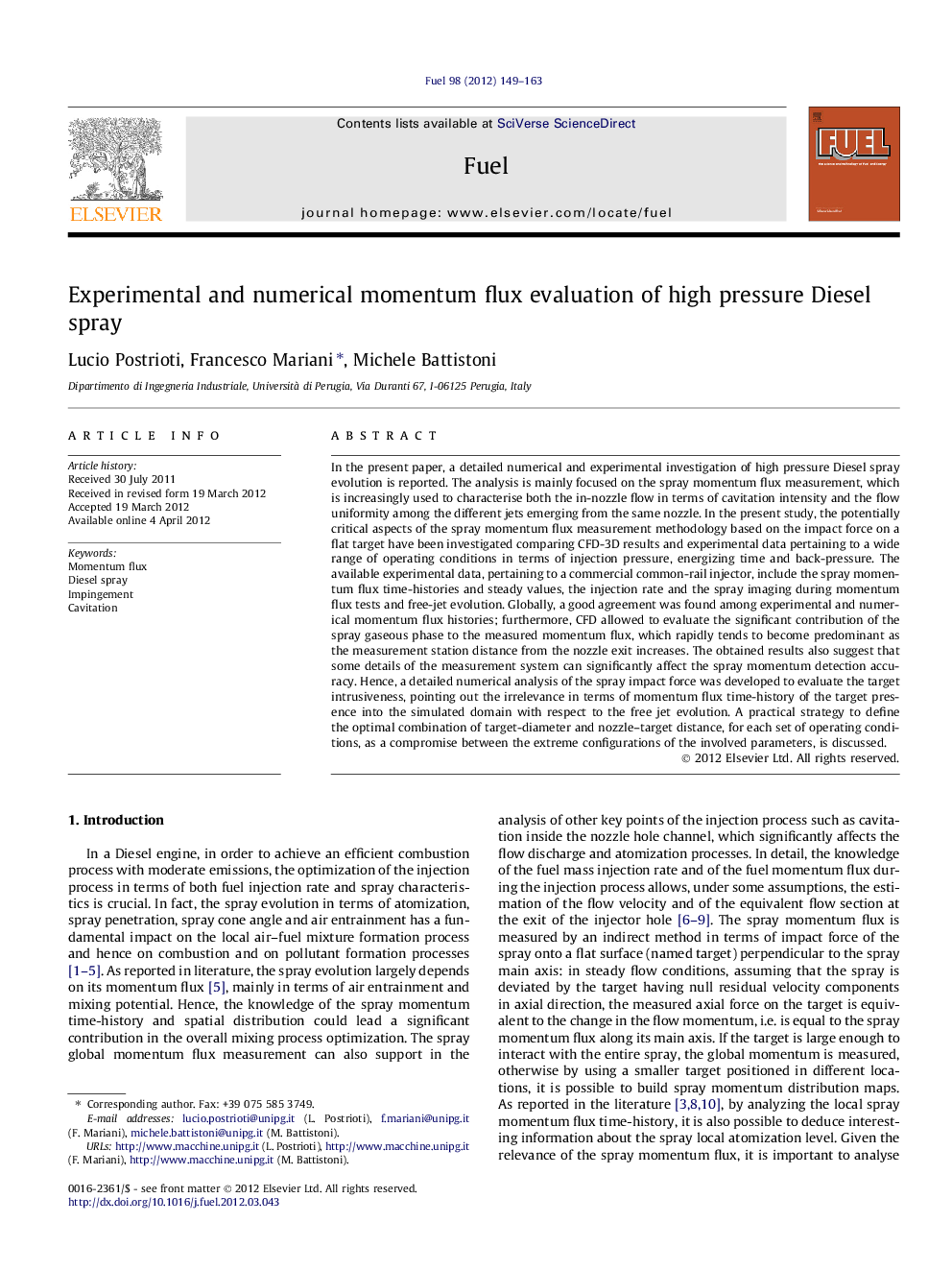| Article ID | Journal | Published Year | Pages | File Type |
|---|---|---|---|---|
| 206324 | Fuel | 2012 | 15 Pages |
In the present paper, a detailed numerical and experimental investigation of high pressure Diesel spray evolution is reported. The analysis is mainly focused on the spray momentum flux measurement, which is increasingly used to characterise both the in-nozzle flow in terms of cavitation intensity and the flow uniformity among the different jets emerging from the same nozzle. In the present study, the potentially critical aspects of the spray momentum flux measurement methodology based on the impact force on a flat target have been investigated comparing CFD-3D results and experimental data pertaining to a wide range of operating conditions in terms of injection pressure, energizing time and back-pressure. The available experimental data, pertaining to a commercial common-rail injector, include the spray momentum flux time-histories and steady values, the injection rate and the spray imaging during momentum flux tests and free-jet evolution. Globally, a good agreement was found among experimental and numerical momentum flux histories; furthermore, CFD allowed to evaluate the significant contribution of the spray gaseous phase to the measured momentum flux, which rapidly tends to become predominant as the measurement station distance from the nozzle exit increases. The obtained results also suggest that some details of the measurement system can significantly affect the spray momentum detection accuracy. Hence, a detailed numerical analysis of the spray impact force was developed to evaluate the target intrusiveness, pointing out the irrelevance in terms of momentum flux time-history of the target presence into the simulated domain with respect to the free jet evolution. A practical strategy to define the optimal combination of target-diameter and nozzle–target distance, for each set of operating conditions, as a compromise between the extreme configurations of the involved parameters, is discussed.
► In the present paper, the spray overall momentum measurement is investigated. ► Experimental and numerical investigation of the spray–target impact process. ► Main analysis parameters: injection pressure, back pressure, target distance and size. ► Numerical analysis of the force exerted by the liquid and gaseous phases. ► The gaseous phase progressively increases its contribute to the spray momentum.
